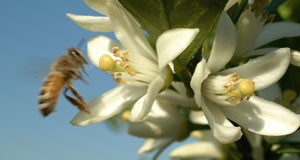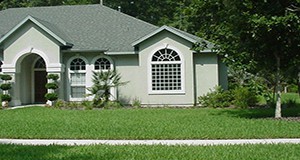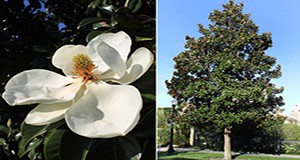Pollinator insects are essential to world food crop production, the economy, and the environment. Neonicotinoid (neonic) insecticides are facing intense backlash from environmental groups because the systemic protection they provide throughout the plant, including the pollen and nectar, may be injuring pollinator insects and causing their population decline. But many nursery and greenhouse growers use neonic-based pesticide control measures because they are effective, inexpensive, and cause less environmental damage than other insecticides. The increased publicity may influence consumer demand and preferences but very few studies have investigated consumer responses to neonic-free labels, and evidence suggests that many consumers have little knowledge or awareness of the issue. This 3-page fact sheet describes the results of a the study investigating how consumers’ awareness of neonic insecticides influenced their preferences and purchasing behavior for plants and exploring the marketing potential of using alternate pollinator promotions (besides neonic-free) in garden center retail outlets. Written by Hayk Khachatryan and published by the Food and Resource Economics Department.
http://edis.ifas.ufl.edu/fe991
Category: Agriculture
Consumer Perceptions of Lawn Fertilizer Brands
Widespread urbanization in the United States has increased the number of lawns. A healthy lawn provides many benefits, including urban heat dissipation, water quality protection, erosion control, carbon sequestration, community safety, aesthetics, and property value growth. Many homeowners maintain their healthy lawns by applying fertilizers throughout the growing season, but excess fertilizer runoff and leaching have received much attention recently because of waterway pollution and algae blooms, leading many states to place restrictions on what chemicals can be used in lawn fertilizers.
Consumers’ increased environmental awareness creates a niche opportunity for the fertilizer industry to promote environmentally friendly lawn fertilizers, but in order to effectively exploit it, industry stakeholders must understand consumer purchasing behavior before expending labor, time, and money creating products for sale. The following 3-page report written by Hayk Khachatryan, Alicia Rihn, and Michael Dukes and published by the Food and Resource Economics Department covers research methodology and the existing brand awareness and selection of consumers in the lawn fertilizer industry. It also discusses homeowners’ preferences for certain fertilizer attributes. Consumer awareness, selection, and attribute preferences indicate existing behavior, and understanding existing behavior assists in the development of effective marketing programs, promotional strategies, and policies.
http://edis.ifas.ufl.edu/fe990
Spotted Wing Drosophila in Florida Berry Culture

Spotted wing drosophila, Drosophila suzukii (Matsumura) (Diptera: Drosophilidae), is an invasive pest that was introduced into Florida in 2009. Spotted wing drosophila survives well under Florida’s climatic conditions. In 2014, losses to berry crops in Florida were estimated at $35 million. Losses are due to maggot-infested fruit, which is unacceptable for the fresh berry market, and puncture holes in the fruit made by egg-laying females. The holes lead to secondary infection by fungal and bacterial pathogens. This 4-page fact sheet written by Lindsy E. Iglesias, James F. Price, Craig R. Roubos, Justin M. Renkema, and Oscar E. Liburd and published by the Department of Entomology and Nematology describes the flies and some strategies to identify them and manage them in berry operations.
http://edis.ifas.ufl.edu/in839
Leafy Greens in Hydroponics and Protected Culture for Florida
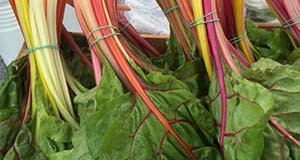
Leafy greens are some of the top “powerhouse” fruits and vegetables. They are also becoming increasingly more popular for consumers. This seven-page fact sheet is designed to aid Florida hydroponic and/or other protected culture growers who are seeking appropriate cultivars of the leafy greens group. The article covers spinach, Swiss chard, kale, collard greens, mustard greens, and Asian greens. Written by Natalie B. Parkell, Robert C. Hochmuth, and Wanda L. Laughlin and published by the Horticultural Sciences Department.
http://edis.ifas.ufl.edu/hs1279
Pest Strips: You Have to Read the Fine Print
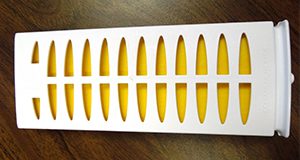
Pest strips are commonly sold at many retail outlets and are available to anyone for purchase. They are constructed of resin plastic with an insecticide that is gradually control-released over time as a vapor. This two-page fact sheets gives important tips on how to use pest strips correctly without creating a hazard.Written by Fred Fishel and published by the Agronomy Department.
http://edis.ifas.ufl.edu/pi262
My Pine Is Under Attack: What Should I Do? A Primarily Insect-Based Decision-Support Guide for Pine Death Management
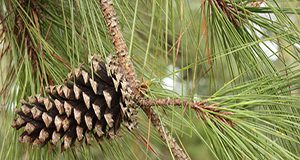
This guide is intended to help tree owners and Extension personnel in Florida and the adjacent southeastern region make decisions about backyard pine trees that display signs of attack by wood borers. The three-page pictorial guide written by Jiri Hulcr and published by the School of Forest Resources and Conservation will help determine whether beetles have attacked a pine tree, how far along the attack has progressed, and what to do about it. There are many sources of pine stress other than insects, so for complete advice, please contact your county Extension agent or post your question at the Tree Health Diagnostics Forum at the University of Florida website: http://www.sfrc.ufl.edu/treehealth.
http://edis.ifas.ufl.edu/fr399
Common Pines of Florida
 Pine trees are highly important to Florida’s ecosystems and economy. There are seven species of native pines, and each grows best in a particular environment. People have found varied uses for each species as well. Several species are of commercial value and are cultivated and managed to provide useful products such as paper, industrial chemicals, and lumber. Some species are also managed to enhance wildlife habitat and to provide attractive landscapes. Of course, many pines grow naturally. Like any natural resource, pines may provide more benefits if they are managed wisely. This 11-page fact sheet written by Niels Proctor and Martha Monroe and published by the School of Forest Resources and Conservation gives an overview of the features and identification of the major pines found in Florida.
Pine trees are highly important to Florida’s ecosystems and economy. There are seven species of native pines, and each grows best in a particular environment. People have found varied uses for each species as well. Several species are of commercial value and are cultivated and managed to provide useful products such as paper, industrial chemicals, and lumber. Some species are also managed to enhance wildlife habitat and to provide attractive landscapes. Of course, many pines grow naturally. Like any natural resource, pines may provide more benefits if they are managed wisely. This 11-page fact sheet written by Niels Proctor and Martha Monroe and published by the School of Forest Resources and Conservation gives an overview of the features and identification of the major pines found in Florida.
http://edis.ifas.ufl.edu/fr003
Cost of Production for Processed Oranges in Central Florida (Ridge), 2014/15
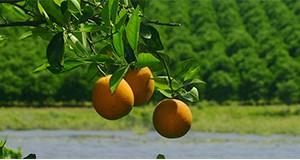
UF/IFAS researchers collected data from five growers to estimate the cost of production per acre for processed oranges in central Florida during 2014/15. The cost estimates in this 4-page fact sheet written by Ariel Singerman and published by the Food and Resource Economics Department do not represent any individual operation. Instead, their purpose is to serve as a benchmark for the Florida citrus industry. Typical users of these estimates include growers, consultants, property appraisers, and researchers.
http://edis.ifas.ufl.edu/fe985
Cost of Production for Fresh Grapefruit in East Florida (Indian River), 2014/15
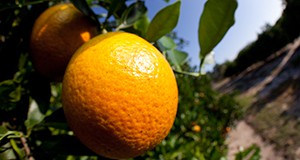
This 4-page article written by Ariel Singerman and published by the Food and Resource Economics Department presents the cost of production per acre for growing fresh grapefruit in the Indian River region during 2014/15, based on a survey of growers conducted at the Indian River Citrus League production committee meeting in March 2015. The cost estimates do not represent any individual operation; rather, their purpose is to serve as a benchmark for the industry. Typical users of these estimates include growers, consultants, property appraisers, and researchers.
edis.ifas.ufl.edu/FE984
Choosing a Licensed Wood-Destroying Organism (WDO) Inspector
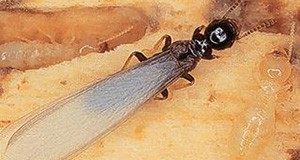
A wood-destroying organism inspection is a visual inspection performed by a licensed pest control inspector trained to identify evidence of termites, powderpost beetles, and other organisms that chew on wood and cause damage to property. Home buyers and sellers, real estate professionals, and lending institutions order these inspections before real estate transactions. This 4-page fact sheet written by Faith M. Oi, Paul Mitola, Kathleen Ruppert, Michael Page, and Mark Ruff and published by the Entomology and Nematology Department explains how to select an inspector who is licensed and certified so that you can be confident in the inspection.
edis.ifas.ufl.edu/IN629
University of Florida Potato Variety Spotlight: ‘Marcy’
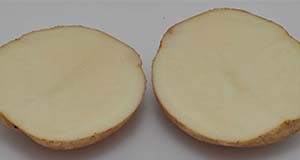
This article introduces the potato variety, ‘Marcy’, which was developed at the University of Florida. ‘Marcy’ is a white-flesh and white-skinned fresh-market potato variety that has demonstrated high yield and good tuber characteristics. This three-page fact sheet provides the general characteristics, season length and growth information, fertilization and planting instructions, as well as disease information for the potato variety, ‘Marcy’.
Written by Rodrick Z. Mwatuwa, Christian T. Christensen, and Lincoln Zotarelli, and published by the Horticultural Sciences Department.
http://edis.ifas.ufl.edu/hs1277
Molluscan Shellfish Aquaculture and Production

Molluscan shellfish aquaculture provides high quality and high value seafood for human consumption, and shellfish provide environmentally beneficial ecosystem services, such as nutrient extraction and water filtration, to the environment in which they are grown. In the past five decades, global fisheries and aquaculture have grown steadily, and seafood consumption per capita has increased. Molluscan shellfish has traditionally been a major component of world aquaculture. Today, molluscs are cultured in 76 countries. This 8-page fact sheet written by Huiping Yang, Leslie N. Sturmer, and Shirley Baker describes molluscan shellfish aquaculture in the United States and worldwide and outlines molluscan shellfish aquaculture stages and methodologies.
http://edis.ifas.ufl.edu/fa191
Candidate Species for Florida Aquaculture: Gulf Killifish, Fundulus grandis
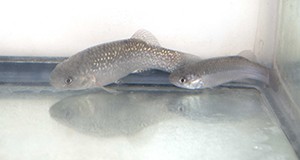
The Gulf killifish is a promising species for commercial aquaculture in Florida with the potential to help diversify the marine baitfish aquaculture industry in Florida and throughout the southeastern United States. Methods for culturing this species have improved in the past decade; this 6-page fact sheet describes the new methods and some strategies to give producers greater control of reproduction, larval growth, and survival. The publication provides the information producers need to make the most informed decision possible when considering Gulf killifish aquaculture. Written by Shane W. Ramee, Joshua T. Patterson, Cortney L. Ohs, and Matthew A. DiMaggio and published by the Program in Fisheries and Aquatic Sciences, School of Forest Resources and Conservation.
http://edis.ifas.ufl.edu/fa190
Nitrogen Fertilizer Recommendations for Sugarcane Production for Sugar on Florida Sand Soils
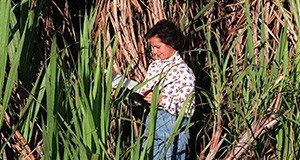
Sands used in sugarcane production in Florida have low levels of organic matter, silt, and clay, and they provide little N through mineralization of organic matter and possess a low capacity for N retention as a result. Because these soils are highly leachable, N must be managed well to ensure adequate nutrition for the crop as well as protection of groundwater. This new 4-page fact sheet is part of the Sugarcane Handbook, and it discusses sand soils used in sugarcane production, sugar yield response to nitrogen, and revised nitrogen recommendations. Written by J. Mabry McCray, Kelly T. Morgan, and Les Baucum, and published by the UF Agronomy Department, February 2016.
http://edis.ifas.ufl.edu/sc101
Ten Common Conifers of the Tampa Bay Area
Conifers are cone-bearing trees often identified by their needles. In addition to their value as landscape trees and lumber and paper sources, they are popular around the holidays as Christmas trees.
This 6-page guide written by Andrew K. Koeser, Holly Finley, Gitta Hasing, Gary W. Knox, and Melissa H. Friedman and published by the Environmental Horticulture Department will assist you in identifying the 10 most common conifers that grow in the Tampa Bay area of Florida. It is an efficient resource for master gardeners, novice tree inventory crews, 4-H forestry teams, and others interested in basic conifer identification.
Florida Consumer Preferences for Fruit-Producing Plant Attributes

This 4-page report from the Food and Resource Economics Department and the UF/IFAS Mid-Florida Research and Education Center compares the effects of plant type, price, production method, and origin attributes on consumer preferences for fruit-producing plants. Authors Hayk Khachatryan and Alicia Rihn present the results of a survey of Florida plant consumers conducted in June and July of 2014 to rate their likelihood of purchasing plants with various attributes, reporting that production methods do indeed directly influence consumers’ preferences for fruit-producing plants. The article describes the implications for the environmental horticulture industry and provides suggestions for growers and retailers to more effectively market their plants.
http://edis.ifas.ufl.edu/fe981
Monitoring Leaching Fraction for Irrigation Scheduling in Container Nurseries
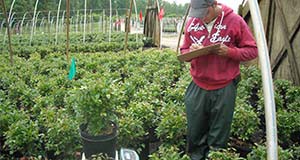
Scheduling irrigation in container nurseries can be a daunting task for producers. There is a great risk of under- or over-watering. The leaching fraction (LF) test is a valuable tool for measuring the volume of container drainage collected during irrigation relative to the volume of water entering the container. With this test, producers can adjust their irrigation to maintain a low percentage of leaching. This four-page fact sheet explains how to perform the test, gives example calculations, and provides some suggestions on how to utilize LF testing when managing irrigation. Written by Jeff Million and Tom Yeager, and published by the Environmental Horticulture Department.
http://edis.ifas.ufl.edu/ep529
Potato Vine Killing or Desiccation
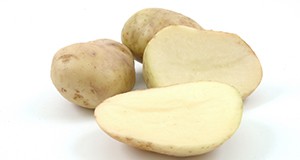
Proper tuber maturity at harvest is an important factor in producing high-quality fresh-market potatoes. Tuber maturity is generally recognized as an important determinant of storage ability and cooking quality. Maturation can be artificially induced by killing the potato vines prior to harvest. This will benefit tuber appearance, limit tuber size, and improve tuber release from the vine. This four-page fact sheet describes the importance of tuber maturation, potato vine killing timing and available methods, and how to determine when to vine kill and when to harvest after vine kill. Written by Lincoln Zotarelli, Steven Sargent, Peter Dittmar, and Mildred Makani, and published by the Horticultural Sciences Department.
http://edis.ifas.ufl.edu/hs181
Ten Common Flowering Trees of the Tampa Bay Area
Blooming trees serve as key focal points in the urban landscape. Florida’s flowering trees can be quite spectacular and leave you wondering, Wow, what tree is that?
This 7-page guide written by Gitta Hasing, Andrew K. Koeser, Gary W. Knox, and Melissa H. Friedman and published by the Environmental Horticulture Department will assist you in identifying the 10 most common flowering trees that grow in the Tampa Bay area of Florida. It is an efficient resource for master gardeners, novice tree inventory crews, 4-H forestry teams, and others interested in basic flowering tree identification.
edis.ifas.ufl.edu/ep505
Biology, Control and Invasive Potential of Giant Reed (Arundo donax L.) in Florida
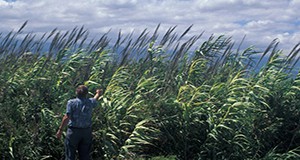
Arundo donax (L.), also known as giant reed, is a tall, fast-growing, bamboo-like grass that under ideal conditions can reach a height of up to 30 feet and a stem diameter up to 1.5 inches. Giant reed is invasive and difficult to control and has caused economic losses in California, Nevada, Utah, Arizona, New Mexico, and Texas. This species was introduced to Florida over 100 years ago and is currently naturalized in at least 26 of the 67 Florida counties. So far giant reed has not proved problematic in Florida, but recent permitting of its planting for bioenergy feed stock may increase the risk that it could naturalize into plant communities in Florida and other southeastern states and potentially cause economic losses as well as harm to native species and habitats. This 5-page fact sheet written by Pat Minogue and Seth Wright and published by the School of Forest Resources and Conservation describes the biology of this species and explains some strategies for its control.
edis.ifas.ufl.edu/fr396
